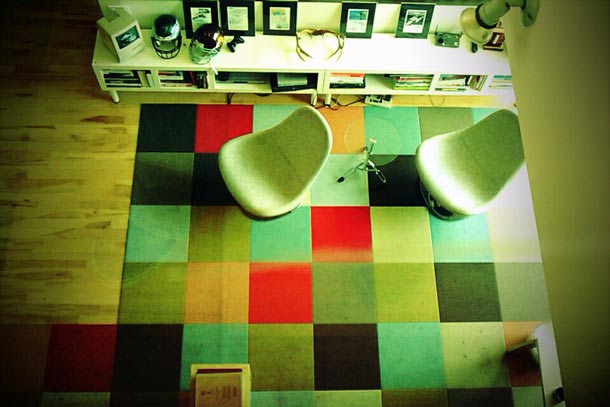 Our VP, Kate Canada Obregon, wrote a blog post on “Five Tips for Making Your Office a Creative Space,” which appeared in The Agency Post today.
Our VP, Kate Canada Obregon, wrote a blog post on “Five Tips for Making Your Office a Creative Space,” which appeared in The Agency Post today.
An excerpt:
Here are five elements that can contribute to making your space the type of generative office that supports and amplifies creativity:
1. Familiar People
Researchers have demonstrated that collaborative work environments create happier and more productive employees. J. Richard Hackman, one of the world’s leading researchers on organizational behavior, found group work, particularly a familiar group, to be more productive when compared to individuals who worked alone. When a familiar group is encouraged to share ideas, hear other perspectives and receive constructive feedback, they report greater satisfaction with their job, their peers and culture.
2. Collision Brainstorming
Writing in the New York Times, Greg Lindsay observes that successful tech firms know the benefits of people coming together for an impromptu brainstorm via happy accidents and aggressively seek what Google calls the “casual collisions” or Yahoo’s “serendipity” meetings. This is because research strongly suggests that structured group work has limits. In the new context of an informal chat, the brain has a chance to re-engage and renew a problem, and possibly come up with new approaches or ways of thinking.
3. Solitary Creativity
Most neuroscience studies on creativity and problem-solving demonstrate the powers of intermittent group work coupled with “incubation” or quiet time and solo work. This is where the lounge and reading areas and ping-pong tables that startups are famous for come in. After a group meeting, the brain needs some distraction and ambient activity to reassess a problem or create. Neuroscientists such as Rex Jung and others have studied the brain in “action,” and observed what is called fluid or dynamic activity in the brain during quiet times of relaxation and calm, which could yield high creative output benefits.
4. Tactile Engagement
If you consume lots of data everyday and need to recall information quickly, there’s new research showing that keeping information slows down our ability to remember and process. One powerful method for what is called “embedding” information is getting tactile at work. Embracing the old-school pen and pencil during a meeting, or taking marginalia in a book can code information into our brains in ways that author Clive Thompson suggests are deeper and more meaningful than on touchscreens. That’s why writable walls, movable whiteboards and active work sessions are excellent ways at getting the brain and body physically involved in learning and doing, fostering neuron activity in the brain.
5. Good Reading Materials
A well-stocked library in your office gives people places to relax between projects, but reading has other powerful cognitive benefits. Recently, researchers at Emory University observed changes in the executive functional part of brain in fiction readers. Participants in the study showed heightened neural activity in the part of the verbal and visual sections of the brain when reading. So, not only were subjects able to “imagine” a character, they were able to activate senses in their brains — deepening their awareness and imaginative capabilities.
See more at The Agency Post.
Comments ( 0 )